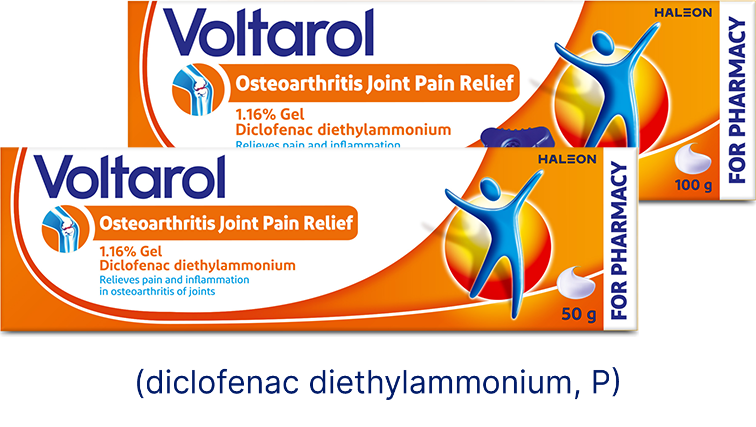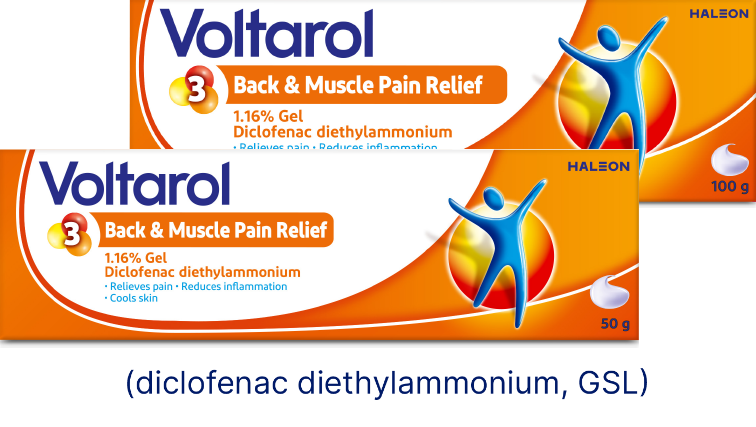In Sponsored Education
Bookmark
Reboot your pain relief advice
How to have more holistic conversations on pain management
Aims
- Help pharmacy staff to understand the science behind the Voltarol brand
- Make suitable recommendations to customers suffering from joint, back or muscle pain
- Support self-care conversations on pain management
Did you know?
To improve pain, inflammation and recovery after sprains and strains, guidance from the National Institute for Health and Care Excellence (NICE) recommends using topical NSAIDs or paracetamol as initial analgesics for soft-tissue injuries.1
Topical vs oral pain relief
When recommending an OTC painkiller, it is important to take into consideration your customer’s preferences and experience using other products. For example, some customers may want the convenience of taking tablets; however, this can result in unwanted side effects due to systemic absorption.
For topical products such as gels you could mention the following benefits:
Can be applied locally to the affected area
Targets the painful area locally
Low risk of systemic side effects: topical medications are absorbed directly to the source of pain, with minimal uptake into the circulation2,3
About diclofenac
Diclofenac is the active ingredient in Voltarol medicated gels. It is a non-steroidal anti-inflammatory drug (NSAID) that works to relieve the pain and inflammation experienced when the body is injured or damaged.
The Voltarol range
Click on each product to learn how it can help customers to manage their painful conditions.

Voltarol Max Strength
Pain Relief 2.32% Gel (diclofenac diethylammonium, P)
Convenient twice-daily dosing to help ease joint pain and inflammation all day long*
Very low systemic absorption, minimising risk of drug interaction5
Provides up to 12 hours of pain relief6
Recommend to a customer with muscle pain, joint pain or osteoarthritis, to help them manage their pain to help them get through their day.
*Apply twice daily, preferably morning and evening



